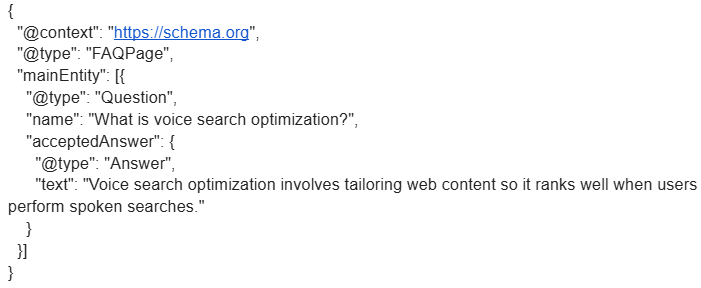Voice search optimization is changing how SEO works and directly affects search engine rankings by focusing on natural language and user intent. This Legiit guide for 2025 explains how to apply best practices in voice search to improve visibility and reach top search rankings.
The Rise of Voice Search and Its Impact on SEO
Voice search optimization is getting more important every day. Lots of people now use voice-activated devices. In 2025, voice search trends show this tech is growing fast. It helps businesses get more attention and improves user engagement. As users change how they search, companies must change their SEO strategies to keep up. This way, they can reach more people and offer a smoother experience.
The impact of voice search on SEO means you can't just use old keyword tricks anymore. People talk differently than they type. They ask questions in full sentences or natural ways. So, your content needs to focus on those conversational phrases instead of short keywords.
Here’s what you should remember:
- Voice search changes how people find info online
- Use natural phrases, not just simple keywords
- Update SEO tactics to match how users speak
- Aim for easy-to-find answers that feel natural
How Voice Search Differs from Text-Based Search
Voice search works differently from typing because people use natural language keywords. Instead of typing “best pizza near me,” they might say, “What’s the best pizza place nearby?” It’s more like talking to a friend than searching with a keyboard.
People want clear and concise answers when using voice search. They don’t want to hear long explanations or confusing jargon. Quick responses matter because voice searches are often done when multitasking or on the go.
Main points about voice vs text search:
- Voice uses natural, conversational language
- Users expect fast and accurate answers
- Queries are usually question-based and detailed
- Information must be easy to access by voice command
Voice Search User Behavior: Key Differences and Implications
Voice search user behavior shows us how people interact with tech differently now. More than half of online searches happen through voice assistants like Siri or Google Assistant (Statista). This tells us that query intent is key, people want quick solutions without digging through many links.
Most voice queries are question-based and have a conversational tone. Users like hands-free access so they can get info while doing other things. Businesses need to focus on giving straight-to-the-point answers that fit this style.
What you need to know about voice user behavior:
- Voice assistants are used a lot for searching
- Users want relevant results fast
- Questions dominate voice queries
- Hands-free convenience drives this trend
To wrap up, focusing on voice search optimization helps your site work better with today’s users. It matches the way people talk and find info now in our digital world.
Content Optimization Strategies for Voice Search

To optimize content for voice search, you need to think differently than traditional SEO. People talk to their devices in a natural way. So, use natural language keywords and keep a conversational tone. Voice queries usually come as questions and are longer. Give clear and short answers that solve the user’s problem.
Here are some tips to improve voice search content:
- Write like people talk every day.
- Add phrases people ask aloud as questions.
- Use long-tail keywords that match specific user needs.
This fits well with how voice assistants work using natural language processing (NLP). It helps your site rank better when people speak their searches.
Crafting Conversational and Natural Language Content
Write content that sounds like normal speech. This helps catch what users really want when they speak their searches. Think about the user's intent by asking: what info do they need?
Keep sentences simple and avoid hard words. For example, instead of saying “optimize your website’s metadata,” try “make your site’s titles and descriptions easy to understand.” Clear words help both people and machines get your meaning through NLP.
Targeting Long-Tail Keywords and Questions
Long-tail keywords are great for voice search because people ask full questions or detailed phrases. Examples are “how do I optimize my website for voice search?” or “best tips for local business SEO.”
Put these naturally into your writing by making FAQ sections or Q&A paragraphs. This matches how people talk in voice searches. Plus, it can help you show up in featured snippets—Google’s quick answers used by voice assistants.
Mastering Featured Snippets for Top Visibility
Featured snippets give quick answers at the top of Google results. Voice search loves these spots because they offer fast info.
To optimize featured snippets:
- Keep answers between 40–60 words.
- Use bullet points or numbered lists when it fits.
- Give precise answers without extra fluff.
Rich snippets make your content even easier to spot by adding schema markup (explained later). These tactics boost your ranking for voice search optmization and bring more visitors to your site.
Technical SEO for Enhanced Voice Search Performance
Technical SEO is key because most voice searches happen on phones. Google uses mobile-first indexing now, so sites must work great on mobile.
Mobile Optimization and Page Speed Best Practices
A website that loads fast and adjusts well on any phone makes a big difference during voice searches. Here’s what helps:
- Make sure your site works on all screen sizes.
- Compress images so they load quickly but still look good.
- Cut down extra code that slows things.
- Use browser caching to speed up repeat visits.
Google says sites loading within three seconds keep visitors longer. Fast pages mean better user experience, especially when people talk to smart speakers or phone assistants.
Schema Markup Implementation for Rich Snippets
Schema markup tells search engines what your page is about in detail. Using microdata tags highlights stuff like FAQs, reviews, events, or products. This can show rich snippets in results.
Here’s an example of FAQ schema you can add:

Doing this makes it easier for digital assistants to find your answers. You get better chances of showing up in both text and audio results.
Local SEO Strategies for Voice Search Domination
Local businesses can win big by tuning their sites for location-based voice commands like “near me” searches on phones or smart devices.
Try these steps:
- Keep Google My Business info correct: name, address, phone (NAP).
- Update local listings on sites like Moz Local, Yext, SEMrush regularly.
- Use local long-tail keywords with place names (“best pizza near Central Park”).
- Ask happy customers to leave reviews, these build trust signals used by Google Assistant.
- Create local FAQs answering neighborhood questions about your services.
Doing all this with voice search optmization helps nearby customers find you fast when speaking to their devices. That means more visits and sales.
Leveraging Voice Search Marketing
Voice Search Marketing Techniques for Increased Reach
Voice search marketing changes how businesses talk to their audiences. When brands include voice search in their digital marketing strategies, they can boost user engagement and get seen more often. A good way is to make content fit natural language queries like how people actually speak when using voice search.
Using voice search advertising on popular platforms helps marketers reach users who want quick answers or are busy doing other things. This creates a seamless experience by giving info without breaking the user's flow. Also, updating SEO strategies to use conversational keywords helps brands get better reach on devices like smart speakers and mobile assistants.
Here are some tips to try:
- Use long-tail keywords that sound like everyday talk.
- Add FAQ sections that answer common questions.
- Make sure local listings work well for “near me” searches.
- Use structured data so your content can show up in special snippets.
These tricks help brands show up more in voice-driven markets and build closer ties through more personal interactions.
Analyzing Voice Search Data to Refine Marketing Strategies
Watching voice search data is key to improving marketing plans. Tools like Google Search Console show patterns in voice search traffic, telling which queries bring visits and where to optimize more. Pairing this with SEO auditing tools helps track how well content made for voice does.
Voice search analytics reveal what users want, so marketers can change their content marketing plans the right way. If the data shows more interest in certain questions or topics, then updating old pages or making new targeted ones can help rankings.
Try these steps:
- Check which keyword phrases people use in voice searches often.
- Look at bounce rates and how long visitors stay from those searches.
- Change meta descriptions and snippets based on what queries work best.
- Test different call-to-action spots that fit spoken commands.
By using accurate data to keep changing plans, businesses can keep up with how people use voice tech which improves SEO results by better targeting and user engagement.
Utilizing Google Search Console for Voice Search Analysis
Google Search Console helps website owners check and improve their site's search results. It is a strong SEO auditing tool. When you want to work on voice search, it gives useful voice search analytics and data about traffic.
You can see which questions or phrases people say to find your site by looking at voice search queries. This helps you add natural language keywords that match how folks speak. Watching organic traffic growth from voice searches shows if your work pays off.
Site audits with Google Search Console find problems that hurt voice search rankings. These could be things like bad mobile usability or slow page speeds. Fixing these issues makes the site easier to use and more visible in voice results.
Checking numbers like click-through rates on featured snippets tells you if people interact well with voice assistants. Overall, using Google Search Console lets you track your site’s success with voice search as it changes.
Top SEO Tools for Voice Search Optimization
Some tools help with voice search in different ways:
- SEMrush: Focuses on long-tail and conversational keywords common in voice searches. Tracks changes in rankings for spoken queries.
- Moz Local: Optimizes business listings across directories. Keeps location info correct for “near me” style searches.
- Yext: Manages business info across platforms. Helps appear in local voice assistant answers.
- Alexa Skills Kit: Lets developers build custom skills for Amazon Alexa devices. Boosts brand presence through vocal commands.
- Speech Recognition Software: Changes spoken words into text accurately. Useful to test if content fits how people actually talk.
AI plays a big role now by understanding what users mean behind spoken queries better than old methods. Adding schema markup built for voice search helps AI get context fast.
Structured data is still key because it tells systems clearly what type of content is on the page like FAQs or recipes that virtual assistants often read out loud.
Using these tools together builds a strong approach that fits the fact that over half of all online searches will be by voice by 2025 (source: Comscore). Keeping up means using tech made just for optimizing voice interactions on today’s devices.
Key Metrics for Tracking Voice Search Performance
Measuring how well your voice search works means looking at some key numbers. You want to see how your voice search performance shapes up. Tools like Google Search Console help with this. There are also special SEO auditing tools that spot voice traffic.
Here are important metrics to watch:
- Voice search rankings: Check where you stand in voice results. They can be different from normal searches.
- Voice search conversion metrics: See what users do after using voice, like calling, filling forms, or buying stuff.
- Voice search traffic analysis: Look at how many visitors come through voice commands and where they come from.
- Organic traffic growth: Track if your overall natural visits grow thanks to voice-friendly content.
These points show if your efforts bring a real ranking boost and better visibility. For example, businesses that use chatty keywords get about 30% more hits from mobile users (Source: BrightEdge).
Keep an eye on these stats often. That way, you can tweak your plans as voice tech changes.
Analyzing User Engagement and Content Satisfaction
User engagement matters when checking if voice search helps your site. Voice assistants want to give fast, spot-on answers. So, writing with clear concise answers and precise responses really helps people stay happy.
To boost user engagement:
- Make content with accurate replies that match what people say out loud.
- Use simple words that sound natural when spoken.
- Watch for user behavior shifts like longer visits or fewer bounces after adding voice-friendly text.
Your content marketing should use these tips by updating FAQs and featured snippets based on real questions from analytics. This keeps your site trusted and useful as needs change.
Look at numbers (traffic trends) and feedback (user actions) together. This helps you shape better content that works well across the web.
FAQs
What is voice search optimization?
Voice search optimization means changing your website so it matches how people talk when they use voice queries. Instead of short typed keywords, you focus on natural language keywords and phrases people say out loud.
How do question-based search queries affect SEO?
People ask full questions in voice searches, like “What are the best running shoes for flat feet?” When your content answers these questions well, it can show up in featured snippets or be read by voice assistants.
Why is user intent analysis important for voice search?
You need to understand what users want. This helps create clear answers that solve their problems fast. User intent analysis guides you to use conversational keywords and build FAQ sections that match real questions.
How can I optimize my site using FAQ schema?
Adding FAQ schema markup helps search engines read your Q&A content better. This gives your pages a chance to appear as rich results, making it easier for users to get quick answers from voice assistants.
Does content marketing play a role in voice search SEO?
Yes. Good content that uses natural language and clear answers keeps users interested. It helps your site rank higher in both text and voice search results.
Key Points to Leverage Remaining Voice Search Keywords
- Use speech-to-text technology to align content with natural spoken phrases.
- Prioritize voice assistant platforms like Google Assistant, Alexa, and Siri for broader reach.
- Enhance voice user interface design to create a user-friendly, intuitive experience.
- Employ structured data and microdata markup to enable rich snippets for voice queries.
- Optimize website security with HTTPS security, improving trust for digital interactions.
- Focus on content structure that supports clear, concise answers fitting voice query trends.
- Monitor voice search performance tracking using tools like Google Search Console, SEMrush, Moz Local, and Yext.
- Adapt SEO strategy continually based on speech-based search patterns and query intent.
- Use voice search advertising platforms to expand digital marketing strategies in the voice domain.
- Simplify management of local business SEO, keeping listings consistent across directories.
- Improve website speed to support seamless integration with smart speaker commands.
- Include FAQ content with schema for better Google Business Profile visibility.
- Utilize automatic speech recognition (ASR) combined with deep neural networks (DNN) for advanced query processing.
- Track organic traffic growth from mobile device voice search to measure ranking boost effects.















 Download
Download